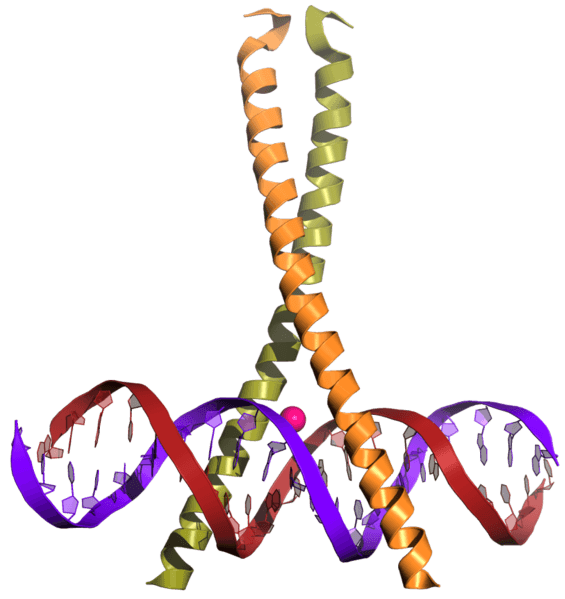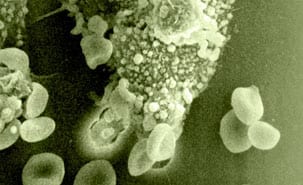
Understanding the biological basis of senescence may allow us to delay or prevent the degenerative declines long accepted as an inevitable part of getting older.
The chief causes of natural death among the elderly form a concise set: Heart disease and cancer are the big killers, with strokes, Alzheimer’s, diabetes, or opportunistic infections claiming most of the rest. Until recently, we’ve focused on attacking each of these diseases separately, but we’ve made little progress; despite developed countries’ collectively spending untold billions of dollars pursuing this elusive goal, eventually something from the same old rogue’s gallery seems to arrive for everyone.
This could all soon change, thanks to a recent, astonishing discovery of genetic pathways that defend against aging. This has opened up, for the first time, the possibility that we can develop medicines that will not only help us live longer but also reach the ends of our lives more gracefully, free from the pernicious diseases that would otherwise plague us. In other words, with the help of drugs already in human trials, there is now a chance that you will be able to dance at your great-granddaughter’s wedding just as you did at your own.
In a way, this isn’t terribly new, because a proven method to extend life already exists; scientists have known about it since the 1930s. It’s called calorie restriction, or CR. Feed a mouse a nutritious diet that has 30 percent fewer calories, and she lives 30 percent longer than the one in the next cage. Nor is she condemned to an extended, prolonged period of senescence; on less food, she lives longer and better, resistant to age-related diseases.
Although we’ve been able to reliably slow aging in lab animals since the Jazz Age, for most of us, myself included, eating 30 percent less simply isn’t a realistic way to dodge the aging bullet, and it’s certainly not an option for the very sick or the elderly. So, for 80 years, scientists have chased the dream of a CR mimetic, something that can do for the body what CR does without requiring us to forgo dinner.
Twenty years ago, if you’d suggested to a parlor full of erudite doctors and professors that something as complicated as aging might be controlled by a small set of genes, you would have been laughed out of the room. But that was precisely what Drs. Cynthia Kenyon, Tom Johnson, and Gary Ruvkun demonstrated in their landmark studies of the roundworm C. elegans in the 1990s. Now, thanks to those trailblazers and my mentor, Dr. Lenny Guarente, we have isolated those genes and discovered ways to tweak them to our advantage.
I began my career in aging research studying baker’s yeast in Guarente’s lab at MIT in the mid-1990s. It’s quite understandable that many scientists at the time were skeptical that any knowledge of relevance to humans would come out of these single-celled organisms, a pile of which would barely cover the period at the end of this sentence. But two discoveries of great interest came from those studies: We learned that yeast cells age because their DNA breaks and gets tangled, and that an enzyme called sir2 slows this process down, extending lifespan by 20 to 30 percent as a result.
This might have been the end of the story, but it turned out that sir2 belongs to a regulatory protein family called the sirtuins, which appear in many organisms, from plants to fruit flies to humans. In humans sirtuin is coded for by a gene called SIRT1. Sirtuins have been conserved by natural selection for a very long time, more than a billion years, because they do something very important. When they’re switched on in an organism, they promote an ultra-protective “maintenance mode,” one that shields against the biochemical deterioration that increases the chance of disease over time. So it’s no accident that they play a role in controlling energy metabolism, endurance, and even the ability to resist cancer. And environmental stress, like calorie restriction, is what sends sirtuins into overdrive.
But this raises a crucial question: With sirtuins on board, why do we age at all? Part of the answer is that there are many processes that cause aging, including some we probably don’t yet know about. My colleagues and I recently published a paper in Cell identifying a previously unrecognized potential cause. We’ve all had days where we find ourselves pulled in too many directions, doing too many things, and none of them particularly well. Aging could be what happens when sirtuins find themselves in the same bind. This is because in yeast and mammals they serve a dual function. Their primary task is to ensure that only the appropriate genes get expressed in any given cell, but their other role is to repair broken DNA in the cell. We propose that when we’re young, SIRT1 juggles both responsibilities fairly easily. But the older we get, the more DNA damage we accrue. As the sirtuins leave their primary posts to address the DNA problem, the ability of our cells to properly control which genes are expressed suffers proportionately, which raises the risk of diseases like cancer and Alzheimer’s. But boosting levels of SIRT1 appears to solve the labor problem?—?there’s enough to tackle DNA damage while still ensuring that gene expression occurs appropriately in old age.
The Latest on: Senescence
[google_news title=”” keyword=”senescence” num_posts=”10″ blurb_length=”0″ show_thumb=”left”]
via Google News
The Latest on: Senescence
- Seer, Inc. (NASDAQ:SEER) Q1 2024 Earnings Call Transcripton May 9, 2024 at 11:38 am
Q1 2024 Earnings Call Transcript May 8, 2024 Seer, Inc. isn’t one of the 30 most popular stocks among hedge funds at the end of the third quarter (see the details here). Operator: Good day and thank ...
- BAYNK Releases Two Tracks From Newly Announced LP 'SENESCENCE'on May 8, 2024 at 2:37 pm
New Zealand-born, LA-based electronic artist and producer, BAYNK, returns in 2024 with the announcement of his second album, SENESCENCE. The album will be released episodically in two-song bundles, ...
- Why One Man Runs a Tree Service That Won’t Cut Down Dead Treeson May 8, 2024 at 2:03 am
He believes so strongly in the role of trees — not just the healthy ones, but also snags, or wildlife trees, the dead and dying powerhouses of diversity that are often the first targeted for erasure — ...
- Cepham’s Luteye Centers on Cellular Senescence to Protect Aging Eyeson May 1, 2024 at 1:30 am
“This is why our research for eye health is centered around cellular senescence.” Cellular senescence is a process by which a cell ages, permanently stops dividing, doesn’t die, and then builds up in ...
- Research reports on senescent characteristics of human corneal endothelial cells upon UV-A exposureon April 30, 2024 at 12:25 pm
A new research paper titled "Senescent characteristics of human corneal endothelial cells upon ultraviolet-A exposure" has been published on the cover of Aging.
- Wake Up and Die: New Brain Cell Discovery Could Unlock Alzheimer’s Secretson April 28, 2024 at 12:44 pm
This uncommon process is more frequently observed in neurodegenerative diseases and could offer insights into disease mechanisms. According to a new study published in PLOS Biology by Kim Hai-Man Chow ...
- Two Paths for TREM2-Positive Microglia: DAM or Senescence?on April 26, 2024 at 4:05 pm
Marco Colonna at Washington University School of Medicine, St. Louis, called the paper insightful, and said it raises several mechanistic questions for future study, such as how TREM2 expression leads ...
- Wake up and die: Human brain neurons re-entering the cell cycle age quickly shift to senescenceon April 23, 2024 at 11:38 am
Post-mitotic neurons in the brain that re-enter the cell cycle quickly succumb to senescence, and this re-entry is more common in Alzheimer’s disease, according to a new study published April 9th in ...
- Negligible Senescence: Why Do Some Animals Age Differently?on October 20, 2023 at 12:15 pm
Theoreticians in the 1960s who were trying to wrap their heads around the principles of why and how animals on this planet age argued that senescence is "inevitable." As time goes by, organisms grow ...
via Bing News










